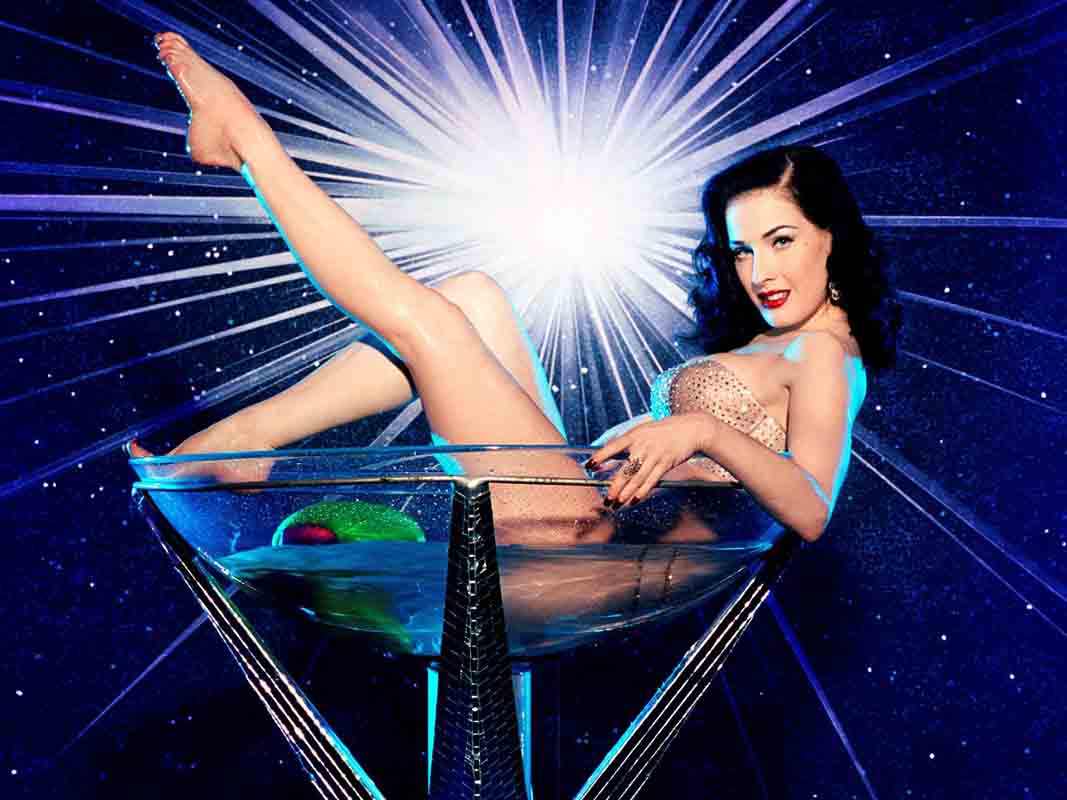The ‘crime’, were it committed today, would barely warrant a wolf whistle. Making her way off stage at a sixth-floor theatre on New York’s Houston Street, burlesque dancer Mae Dix absentmindedly began peeling off her costume before she’d reached the wings.
The year was 1917 and the spectre of Victorian England – where ‘proper’ women went to extraordinary lengths to hide their natural contours beneath bustles, hoops and frills – still loomed large. Young ladies stripping on stage? Unthinkable! Outrageous!
Not so to this downtown audience of impoverished immigrants, who whooped and cheered at the sight of such brazenly bared flesh. To wild applause, Dix strode back to centre stage and continued her spontaneous striptease. Thrilled, the owners ordered the ‘accident’ to be repeated every night.
The move triggered an endless power struggle: to keep their license, the Minsky brothers had to keep their shows clean, but to keep their customers – including Condé Montrose Nast, legendary publisher of Vogue – they had to dabble in the risqué. Whenever they overstepped the mark, Minsky’s Burlesque was raided by the authorities (by 1937, reform-minded New York Mayor Fiorello LaGuardia had outlawed use of the words ‘Minsky’ and ‘burlesque’ in public advertising).
Roll. Twang. Whoosh! Millie DeLeon was by far the biggest burlesque star of the early 20th century. As responsible as the Minsky brothers for giving the form its raunchy reputation, this beautiful, buxom brunette famously tossed her garters into the audience during shows and occasionally neglected to wear tights – shenanigans that got her arrested on more than one occasion.
Such artful use of scandal is the very essence of burlesque, a term derived from the Latin word burrae, which translates as ‘nonsense’. Long before it became a synonym for ‘striptease’, it referred to the pantomime-style lampooning of serious literary, dramatic and musical works so beloved by the upper classes. These extravagant pastiches deployed comedy, music and dance to challenge the established values of the day, with enormous success.
By the end of the 19th century, just as the genre’s popularity was dwindling in England in favour of rather more staid Edwardian musical comedies, it found new fame in New York. It had been introduced to the city by visiting troupe Lydia Thompson and the British Blondes. Switching the focus from comedy to female near-nudity, American burlesque began to flourish. It boomed further during Prohibition, bootleg liquor fanning the intoxicating air of inhibition.
As Robert G. Allen writes in Horrible Prettiness: Burlesque and American Culture, published in 1991: “Without question… burlesque’s principal legacy as a cultural form was its establishment of patterns of gender representation that forever changed the role of the woman on the American stage and later influenced her role on the screen… The very sight of a female body not covered by the accepted costume of bourgeois respectability forcefully if playfully called attention to the entire question of the ‘place’ of woman in American society.”
The point was not to offend, but to spoof and – to a limited degree – titillate; the emphasis firmly on the tease, rather than the strip. It is this golden age of burlesque that Elyxir hopes to breathe life into during Cambodia’s first ever show this week. The event is a nod to neo-burlesque stars such as Dita Von Teese, who in her own words “puts the tease back into striptease” (this 5’5” corset-clad pin-up, dubbed ‘a Burlesque Superheroine’ by Vanity Fair magazine, once appeared at a fundraiser for the New York Academy of Art wearing nothing but $5 million worth of diamonds).
Elyxir’s owners believe there’s a need for the bold challenge that burlesque poses to the social, cultural and sexual status quo – just as a new generation is recognising the spirit of spoofery that made it such potent entertainment back in the mid-19th century (the 2010 film Burlesque, starring Christina Aguilara and Cher, wiggles its derrière in the old-school direction).
“When I saw the Glamazon hair show at Pontoon, I knew the country was ready for burlesque – just going that one step further,” says Nathalie Ferrero. “We want, for one night, to animate this place, make it a fantasy land. I want to offer Khmer people something they’ve never seen.
“In Europe, burlesque is a way of doing things without being vulgar. It’s all about the tease. That’s the goal: to change the mentality without shocking. We want to do something funny, unusual, and totally crazy. With burlesque, that’s easy, because everything is stupid and crazy. It’s over the top; it’s not reality – like Dita von Teese.”
The sprawling mansion on Street 466, once the site of Lebanese restaurant Le Liban, will play giddy host to roughly 20 performers on the night, from belly dancers to Miss Joy and the Femmes Fatales – a fan-dancing offshoot of Dance Workshop Cambodia. Expect bronzed Aphrodites in the pool; high-kicking hits from the musical Chicago, and a whole host of Sugar Babies channelling the very best of neo-burlesque. Bring your own pasties.
WHO: Dita Von Teese devotees
WHAT: A night of neo-burlesque
WHERE: Elyxir Urban Wine Spot, #3 St. 466
WHEN: 8pm June 22
WHY: Burlesque is alive and giggling
